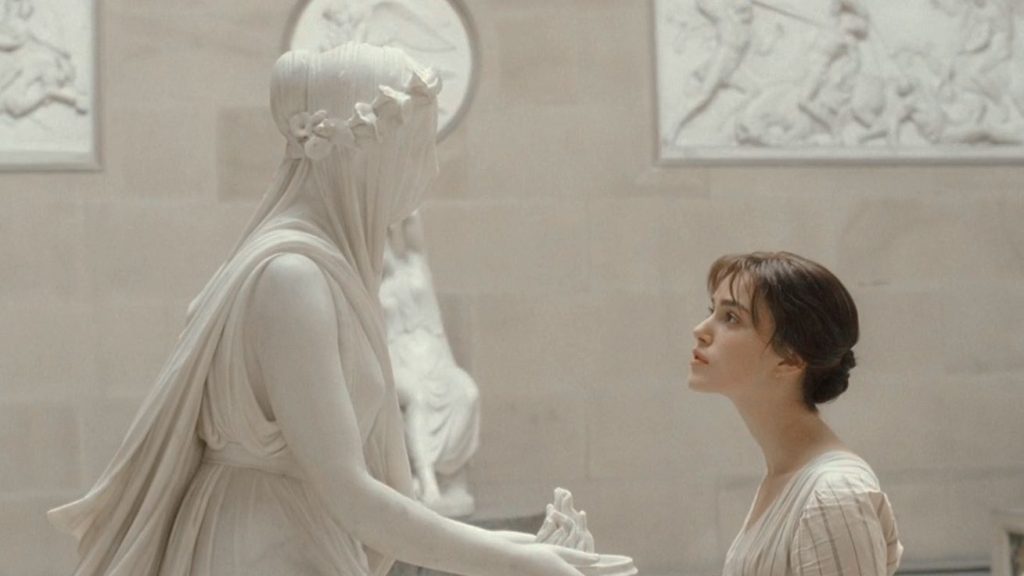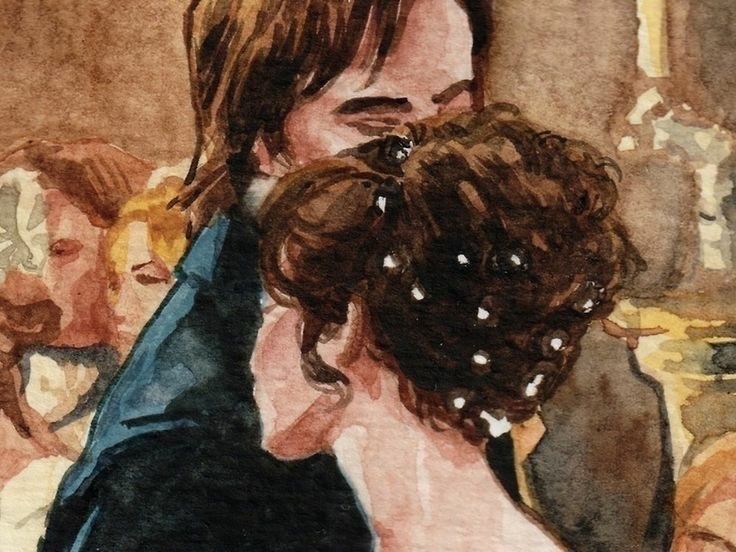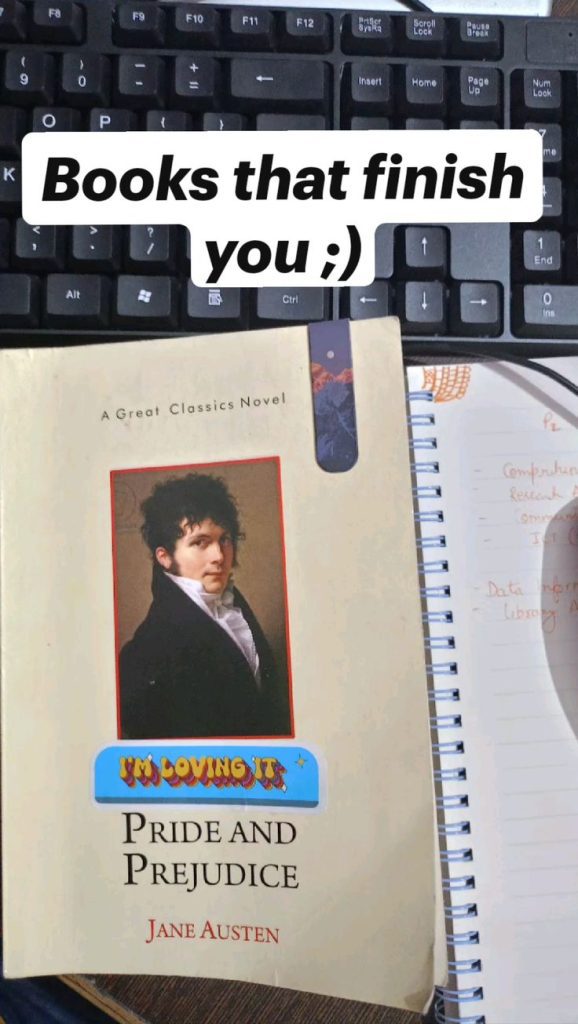I watched an unhealthy amount of Pinterest posts and short videos on Pride and Prejudice, and I am not embarrassed (well, a little bit). My boyfriend was concerned that my mental space was being taken over by Mr. Darcy and Miss Bennet.
But I needed to finish the book, and yes, let the book finish me.
But Why?
To be honest, this book came to me first as it was a coursebook for my younger sister’s undergraduate courses. She did not read; she had no time to read and suffer. I did.
I started reading it late in July and wanted to read each word. My exams came, and I had to put them down for a while, only to pick them up later.
I even went on a trip to Amritsar with this book on my mind and surely in my bag. I read and read, went on reading.
Yes, the English vocabulary in Pride and Prejudice is tough and new at the same time. The word, which is now flagged for being AI, is freely used here. I envy the pre-AI era when all the words were treated with the same tag.


Well, more insights from Pride and Prejudice now:
The central part is a lady at the centre of the story and her experiences. This was rare in the 1800s, and hence this book became remarkable. These days, women characters are not being portrayed with this courage and fearlessness, which is itself a challenge.
Mr. Darcy is the epitome and living example of social anxiety. I don’t know what they made of anxiety back in the day, but for a fact, I know that it was not treated well. We have started acknowledging anxiety well these days, and that surely is a progressive remark.
My Favorite parts from Pride and Prejudice:

Mr. Collins’s proposal – Oh my goodness, the secondhand embarrassment is real. The way he just assumes Elizabeth will say yes because he’s doing her such a “favor” by proposing, completely ignoring her obvious discomfort. It’s peak cringe comedy, and Austen’s satire is absolutely ruthless. When he keeps insisting that her refusal is just “elegant female behavior” and that she’ll definitely change her mind – I can’t! The man is delusion personified.
Lizzy’s Pemberley visit – This scene is everything. Walking through Darcy’s estate and seeing him through his housekeeper’s eyes, realizing she might have completely misjudged him. The moment she sees his portrait and thinks about how different he looks – more gentle, more human. It’s like seeing someone’s true home and finally understanding who they really are beneath all the social awkwardness.
Mr. Bingley’s return from London – The way Jane tries to act composed while internally screaming! And Charles being his usual golden retriever energy, just happy to be back and see Jane again. You can feel all that unfinished business hanging in the air. Plus, watching Darcy awkwardly trying to help his friend while dealing with his own Elizabeth feelings – the emotional chaos is delicious.
Lydia’s return after marriage – The audacity! She just waltzes back in like she didn’t nearly destroy her family’s reputation, completely oblivious to the chaos she caused. But it’s also where we see how Elizabeth and her family have grown – they handle it with more grace and wisdom than before. And the way it contrasts with Elizabeth’s own character development throughout the book is just a chef’s kiss.
Why They’re Still Relevant (And Why We’re All Still Obsessed with Pride and Prejudice)
Elizabeth Bennet is basically every woman who’s ever been underestimated. She’s sharp, she doesn’t settle, and she’s not afraid to tell a rich man exactly what she thinks of him. In an era where women had zero economic power, she chose love on her own terms. That’s still radical today.
In Pride and Prejudice, Mr. Darcy represents the emotionally unavailable man we’ve all encountered – the one who seems rude but is actually just terrible at expressing feelings. Except unlike modern dating disasters, he actually does the work to become better. Character growth! In this economy!

The book tackles class differences, first impressions, and the courage to admit when you’re wrong – themes that feel surprisingly fresh when half our relationships start with judging someone’s Instagram aesthetic.
What gets me is how Austen wrote a romance where both people actually change. Lizzy learns to look beyond surface impressions, Darcy learns humility and how to human properly. It’s not about fixing each other; it’s about becoming better versions of themselves.
Plus, the wit! The dialogue sparkles even 200+ years later. When Charlotte Lucas says “I am not romantic, you know; I never was,” I felt that in my soul.
Conclusion
Reading Pride and Prejudice in 2025 while algorithms try to predict my every move made me appreciate Austen’s insight into human nature even more. She understood that we’re all walking around making assumptions about each other based on limited information – basically, she predicted social media.
Will I reread it? Absolutely. Will I continue watching BBC Pride and Prejudice clips on repeat? Also yes. Will my boyfriend ever understand the Darcy obsession? That remains to be seen.
But here’s what I know for sure: some stories transcend their time not because they’re perfect, but because they’re deeply, recognizably human. And sometimes, you need a 200-year-old romance novel to remind you that real love is about seeing and accepting someone fully – pride, prejudice, and all.
Now, excuse me while I go rewatch the hand flex scene one more time.




